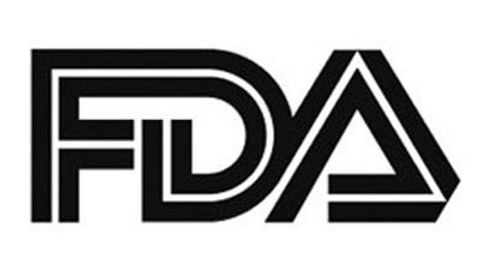FDA Requests Limited Use for Niraparib in Patients Without gBRCAm
Based on OS data from the phase 3 ENGOT-OV16/NOVA trial, the FDA has requested niraparib to have restricted use as a second-line maintenance therapy for patients without germline BRCA mutations.

At the request of the FDA, niraparib (Zejula) will have restricted use as a second-line maintenance therapy after platinum-based chemotherapy for patients with deleterious or suspected deleterious germline BRCA mutations (gBRCAm), according to an announcement from GSK plc.1
The first-line indication of niraparib remains unchanged for adult patients with advanced epithelial ovarian, fallopian tube, or primary peritoneal cancer who have a complete or partial response to platinum-based chemotherapy.
This decision is based on FDA review of the final overall survival (OS) analysis of the phase 3 ENGOT-OV16/NOVA (NCT01847274) trial. While this trial previously served as the basis for the approval of niraparib as a second-line maintenance therapy, final OS results from the study showed the secondary end point of OS to have a hazard ratio (HR) of 1.06 (95% CI, 0.81-1.37) in patients without gBRCAm.
Updated prescribing information notes that when used as a first-line maintenance treatment for patients with advanced ovarian cancer, the recommended dose for patients weighing <170 lbs or with a platelet count <150,000/mcL is 200 mg taken orally once daily. For patients weighing ≥170 lbs and who have a platelet count ≥150,000/ mcL, the recommended dosage is 300 mg taken orally once daily.
Patients should continue treatment until disease progression or unacceptable adverse reaction. If patients are experiencing adverse events, interruption of treatment, dose reduction, or dose discontinuation is recommended. Further, patients with moderate hepatic impairment should reduce the starting dose of niraparib to 200 mg once daily.
Niraparib is an oral, once-daily PARP inhibitor which is being evaluated in multiple pivotal trials, including ENGOT-OV16/NOVA. These trials aim to assess the activity of niraparib across multiple tumor types and examine its potential when combined with other therapeutics.
Current combination studies include the phase 3 FIRST trial (NCT03602859) of niraparib plus dostarlimab (Jemperli) for patients with ovarian cancer, and the phase 3 ZEAL study (NCT04475939) of niraparib combined with the standard of care for patients with first-line advanced non–small cell lung cancer. The agent is also being evaluated in patients with HER2-negative BRCA-mutated or triple-negative breast cancer.
The randomized, double-blind, placebo-controlled, phase 3 ENGOT-OV16/NOVA study evaluated the use of niraparib for the maintenance treatment of patients with platinum-sensitive recurrent ovarian cancer.2
A total of 203 patients whose tumors were positive for gBRCAm were enrolled in the first cohort of the study as well as 350 patients with non-gBRCAm disease in the second cohort. Patients were all randomized in a 2:1 ratio to receive either niraparib 300 mg once daily or matching placebo. The primary end point of the study was progression-free survival (PFS) and the secondary end points included safety and OS.
Findings presented during the Society of Gynecologic Oncology Annual Meeting showed that niraparib led to a median PFS of 21.0 months in the evaluable patients with gBRCAm platinum-sensitive recurrent ovarian cancer while the PFS was only 5.5 months for the 65 patients given a placebo (HR, 0.27; 95% CI, 0.17-0.41; P <.001). Within the 234 patients with non-gBRCAm, the median PFS was 9.3 months vs 3.9 months for the 116 patients who received placebo (HR, 0.45; 95% CI, 0.34-0.61; P <.001).
PFS2 had a maturity of 81% and patients with non-gBRCAm disease showed benefit with niraparib beyond the first progression (HR, 0.81; 95% CI, 0.632-1.050). Then, patients with gBRCAm disease had a 78% maturity (HR, 0.67; 95% CI, 0.479-0.948).
The OS data at an average follow-up of 5.6 years were 68% mature in patients with non-gBRCAm disease and showed a median OS of 31.1 months with niraparib vs 36.5 months with placebo (HR, 1.10; 95% CI, 0.831-1.459). Once adjusted for subsequent PARP inhibitor therapy, the inverse probability of censoring weighting adjustment (IPCW) for median OS was 31.3 months with niraparib compared with 35.9 months with placebo (HR, 0.95; 95% CI, 0.74-1.26). Overall, these data showed there to be no difference in OS for patients given niraparib vs subsequent PARP inhibition.
For patients with gBRCAm disease, OS data were measured at 63% maturity. Those given niraparib saw an improvement in OS at a median of 43.6 months vs 41.6 months with placebo (HR, 0.93; 95% CI, 0.633-1.355). After the IPCW, the median OS was 43.8 months with niraparib (95% CI, 36.4-56.2) compared with 34.1 months (95% CI, 27.6-53.0) with placebo (HR, 0.66; 95% CI, 0.44-0.99).
Regarding safety, hematologic treatment-emergent AEs (TEAEs) mostly occurred within the first year of therapy for all patients enrolled in the study. The most common TEAEs observed with niraparib were thrombocytopenia (35.7%), anemia (27.0%), and neutropenia (20.7%). In the placebo arm, the most common TEAEs included gastrointestinal disorders (5.0%), hypertension (2.2%), and neutropenia (1.7%). For patients treated with niraparib, the incidence of grade 3 or higher thrombocytopenia decreased to 2.8% after year 1 or 2, and anemia and neutropenia decreased to 0.7% and 2.1%, respectively.
Among the evaluable patients, 49 patients remained on niraparib for more than 3 years compared with 9 patients in the placebo arm. Myelodysplastic syndrome (MDS) or acute myeloid leukemia (AML) was observed in 1.4% of patients in the niraparib arm vs 1.1% in the placebo arm. The incidence of MDS/AML was 3.5% with niraparib compared with 1.7% with placebo when considering long-term treatment as well as the use of subsequent therapies.
REFERENCES:
GSK provides an update on Zejula (niraparib) US prescribing information. November 11, 2022. Accessed November 14, 2022. https://bit.ly/3O6wuX5
A maintenance study with niraparib versus placebo in patients with platinum sensitive ovarian cancer. ClinicalTrials.gov. Updated February 4, 2022. Accessed November 14, 2022.
Novel Therapies and Combinations Lead the Way in Women’s Cancers in 2024
January 3rd 2025Potential practice-changing therapies in gynecologic cancer include the emergence of carboplatin, paclitaxel, and PD-1 blockade, or the use of fam-trastuzumab deruxtecan-nxki in endometrial cancer.
Read More